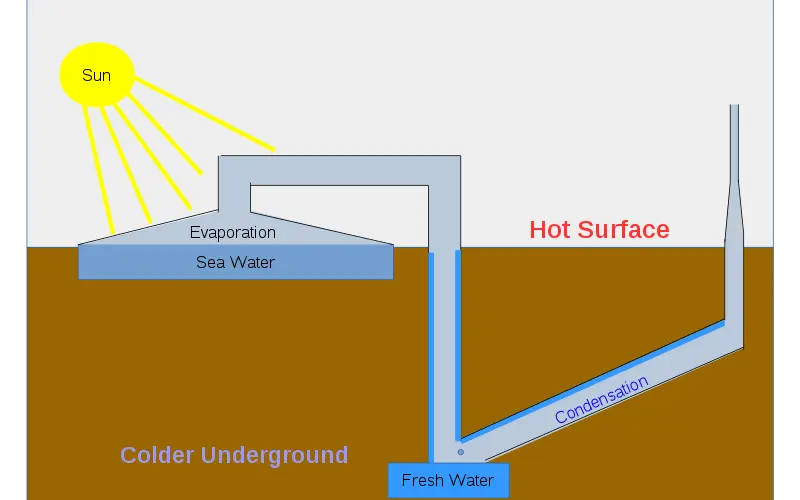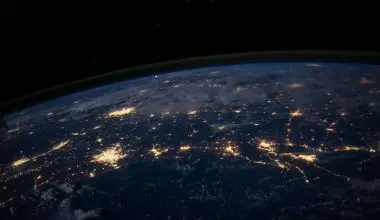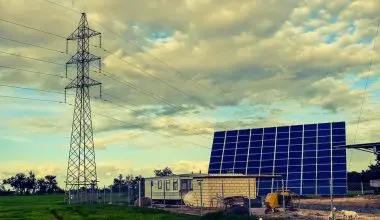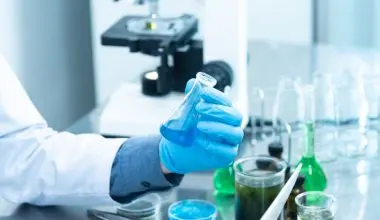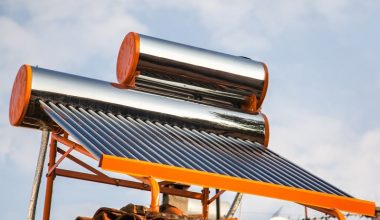Table of Contents Show
As solar becomes more and more popular it’s understandable that some thought about using solar energy to turn saltwater into freshwater. Since it is a renewable source of energy and a free method, we can expect it to be quite worthy.
What is Solar-based Water Desalination?
Solar-based water desalination is achieved using solar energy to convert saltwater into freshwater. There are two basic methods of going about this process, Direct and Indirect Solar-based water desalination.
Direct Method of Solar-based Water Desalination
In the Direct method of Solar-Based Water Desalination plants, one part of the apparatus is the solar heat collector which contains the seawater, and the other part is the distillation apparatus which will condense the evaporated water. This form of apparatus is usually mentioned in survival guides and taught to marines. They are known as solar stills.
Basically when the sun heats up the seawater inside the solar collector, the water evaporates, leaving behind impurities in the ‘seawater’ like salt. The solar collector has an inlet pipe for more seawater to come in, an outlet for ‘super-saline’ water to leave out of and another outlet for evaporated water to leave out of the chamber which will then be condensed.
Since this a relatively small apparatus and the production capacity is just about 5 liters per square meter in one day, it is perfect for household use or desalination plants with production capacity not more than 53000 gallons/day.
These forms of solar stills are very handy in cases of emergency and one should keep it in their backpack when planning to go camping.
Indirect Method of Solar-based Water Desalination
The Indirect Solar Water Desalination process involves two processes. The first one is the collection of solar energy using photovoltaic solar panels, then the second part is the desalination part where the saltwater is converted into freshwater using a conventional water desalination plant.
The first part where solar energy is collected just as how any other solar system works tp provide electricity. This energy is then used to run any of the desalination systems which is the second step. There are many desalination systems to purify water such as Multiple Effect Humidification,Multiple Effect Distillation, Multiple Stage Flash Distillation, Multiple Effect Boiling, Humidification-Dehumidification, Freeze Effect Distillation and last but not the least, Reverse Osmosis.
Indirect solar-based desalination systems are very efficient with space as compared to direct solar desalination systems, they can produce 200 liters of purified water with energy from 1 square meter of photovoltaic solar panel in one day. Since this method is efficient and cheaper to produce on a large-scale, it is preferred for larger plants.
Issues with Solar Or Thermal Desalination Systems
One of the major problems encountered with Thermal desalination systems is the initial cost of constructing it. As of now you can expect to spend 4 times higher to set up a Thermal desalination plant rather than oil-based desalination plants.
Another problem is reliability as the weather is unpredictable and even partly cloudy could greatly reduce the water production and survival could be critical in such cases.
So this is best only for areas with very predictable sunny climates everyday.Sun shines for around 12 hours of the day only. To get the best efficiency out of a production plant, the desalination plant needs to run 24 hours a day. This would require the placement of batteries to store solar energy during the day and provide energy for the plant to run during the night. This would cause the costs to go through the roof!
Last but not the least, solar power desalination plant requires a large-enough space to place all the solar equipment, mainly solar panels. At locations where land is expensive, a solar power desalination plant would just not be profitable enough.
